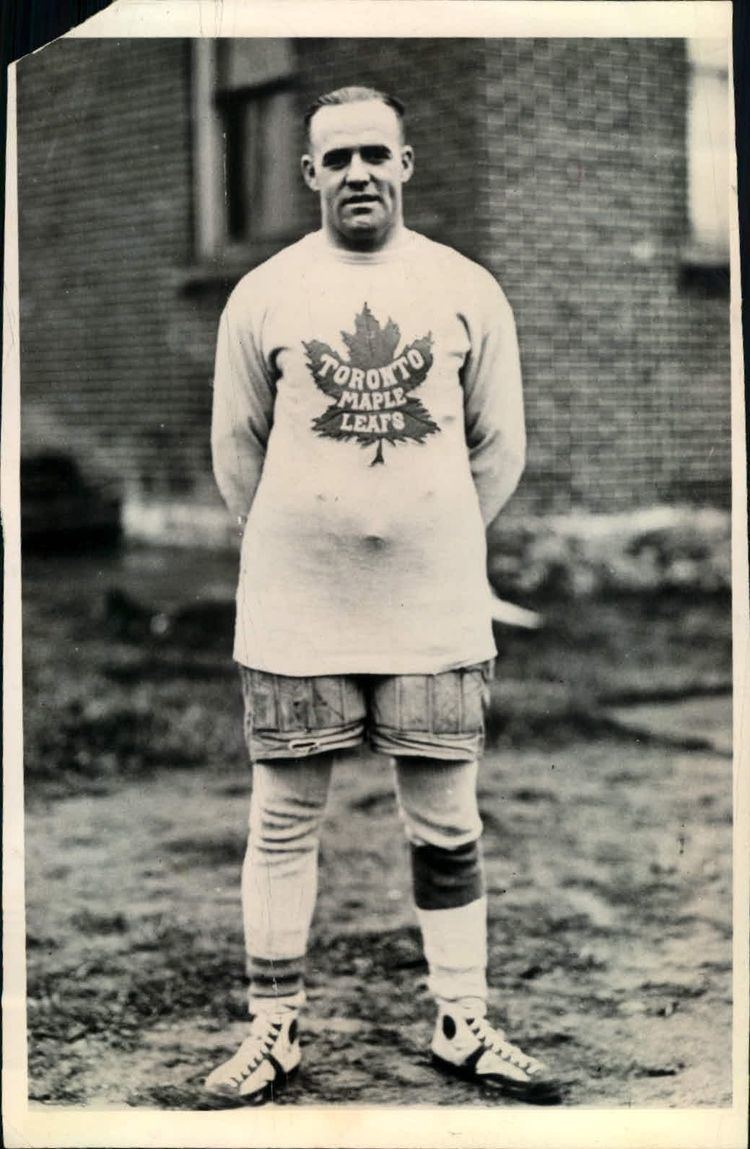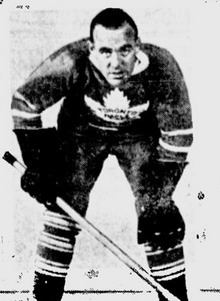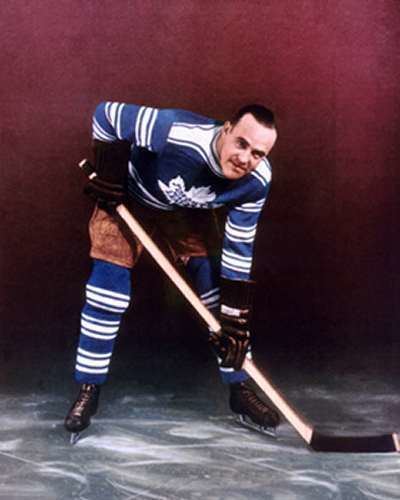Role Ice hockey player Shot Left Height 1.7 m | Playing career Weight 70 kg Name King Clancy Albums Volcano | |
 | ||
Born February 25, 1903Ottawa, ON, CAN ( 1903-02-25 ) Played for Ottawa SenatorsToronto Maple Leafs Died November 10, 1986, Toronto, Canada Similar People Mike Babcock, Dion Phaneuf, Brian Burke | ||
Star defenseman King Clancy did everything in hockey
Francis Michael "King" Clancy (February 25, 1902 – November 10, 1986) was a Canadian professional ice hockey player, referee, coach and executive. Clancy played 16 seasons in the National Hockey League (NHL) for the Ottawa Senators and Toronto Maple Leafs. He was a member of three Stanley Cup championship teams and won All-Star honours. After he retired in 1937, he remained in hockey, becoming a coach for the Montreal Maroons. Clancy next worked as a referee for the NHL. He joined the Maple Leafs organization and worked in the organization as a coach and team executive until his death in 1986. On January 1, 2017, in a ceremony prior to the Centennial Classic, Clancy was part of the first group of players to be named one of the '100 Greatest NHL Players' in history.
Contents
- Star defenseman King Clancy did everything in hockey
- Nhl awards 2009 king clancy memorial trophy
- Playing career
- Post playing career
- Awards and honours
- Personal
- References
Clancy's nickname "King" originates from his father, who was the first 'King Clancy' and played football for Ottawa. At the time the football was not snapped as is done today, but was 'heeled' back from the line. Frank's father was very good at this and was named 'King of the Heelers' or 'King' for short. This nickname was eventually transferred to Frank.

Nhl awards 2009 king clancy memorial trophy
Playing career

Clancy played for junior teams in the Ottawa area and began his NHL career in his hometown playing for the Senators, where he would establish himself as among the league's top players and help the Senators to Stanley Cup wins in 1923 and 1927. Although he was one of the smallest defencemen of his era, he was tough and fast and would not back down. According to Brian McFarlane, it was said that King Clancy started a thousand fights and never won one.

During a March 31, 1923, Stanley Cup game against the Edmonton Eskimos, Clancy became the first hockey player to play all six positions during one game. In the third period, goaltender Clint Benedict was given a two-minute penalty. At the time, goalies served their own penalties. Not wanting to leave the net open, Clancy played goal for the two minutes Benedict was gone.
On October 11, 1930, coming off the most productive season of his career, with 17 goals and 40 points in 44 games with the Senators, Clancy was traded to the Maple Leafs, with Toronto manager Conn Smythe giving up $35,000 and two players for him. In his second season with the Leafs, Clancy helped his team win the Stanley Cup.
After a slow start to the 1936–37 season, Clancy announced his retirement six games into the season. He retired as the top scoring defenceman in NHL history, with 283 career points. In Clancy's last game, he represented the Montreal Maroons at the Howie Morenz Memorial Game in 1937.
Post-playing career
The season after his retirement as a player, Clancy briefly coached the Montreal Maroons before beginning an 11-year stint as an NHL referee. In 1949, the Montreal Canadiens hired Clancy to coach their American Hockey League farm team, the Cincinnati Mohawks. He was released after two losing seasons, and rejoined the Maple Leaf family as coach of the Leafs' AHL affiliate, the Pittsburgh Hornets. The Hornets had two outstanding seasons under Clancy, winning the Calder Cup as league champions in 1951–52, and nearly repeating the following year, before losing the cup final in seven games.
On the strength of that performance, Clancy was made coach of the Maple Leafs for the 1953–54 season. He held the job for three years, but the team struggled, with each season worse than the one before it. He was then given the title assistant general manager by his friend, Conn Smythe, but his responsibilities often involved public relations at least as much as building a hockey team. Clancy was inducted into the Hockey Hall of Fame in 1958.
He remained assistant general manager-coach through the 1960s, working under Punch Imlach. When Imlach was fired in 1969, Clancy initially said that he'd leave with him, but he was persuaded to stay with the Leafs and was made vice-president (a decision that did not go over well with Imlach, although the two later reconciled).
After Harold Ballard took control of the Leafs during the 1971–72 season, Clancy and Ballard became inseparable friends. Former Leafs player, coach, and assistant general manager Hap Day would say that Clancy was paid to do nothing by both Smythe and Ballard.
During the 1971–72 season, Clancy stepped behind the Leafs' bench as acting coach for 15 games while head coach John McLellan recovered from a peptic ulcer.
He was the last surviving member of the 1922–23 Stanley Cup championship team (Ottawa Senators).
Clancy remained in the Leafs' front office for the rest of his life. In 1986, he had an operation to remove his gallbladder. Infection from the gallbladder seeped into his body during the operation, and he went into septic shock. He died November 10, 1986, at age 83 and is buried in Mount Hope Catholic Cemetery in Toronto, Ontario. He was associated with professional hockey for 65 years at the time of his death, the longest such tenure in NHL history (a record since equaled by Marcel Pronovost).
Awards and honours
While playing for the Leafs, Tim Horton wore the number 7, the same number worn by King Clancy from 1931–32 to 1936–37. The team declared both Horton and Clancy honoured players at a ceremony on November 21, 1995, but did not retire the number 7 from team use; despite this, it became an Honoured Jersey Number,abiding by Leafs honours policy.
The King Clancy Memorial Trophy was named in his honour and is awarded annually to the NHL player who demonstrates leadership qualities on and off the ice and who has made exceptional humanitarian contributions in the community.
In popular culture he is referred to in the TV series How I Met Your Mother in the episode of "Old King Clancy".
Personal
His son, Terry Clancy participated in ice hockey at the 1964 Winter Olympics and later played for the Toronto Maple Leafs. His great granddaughter, Laura Stacey won the silver medal at the 2011 IIHF Under 18 women’s hockey championships and was a member of the Canadian National Under 18 team that participated in a three-game series vs. the USA in August 2011. She would go on to claim a gold medal for the Under 18 team at the 2012 IIHF Under 18 championships.
